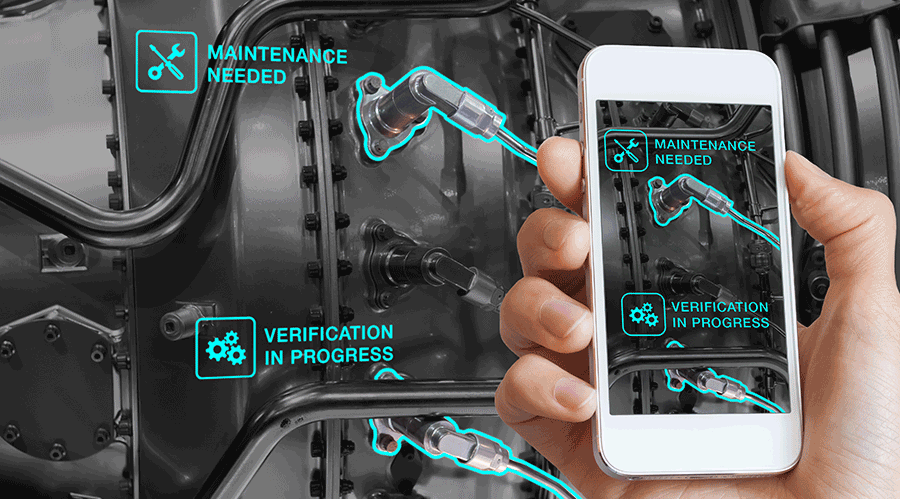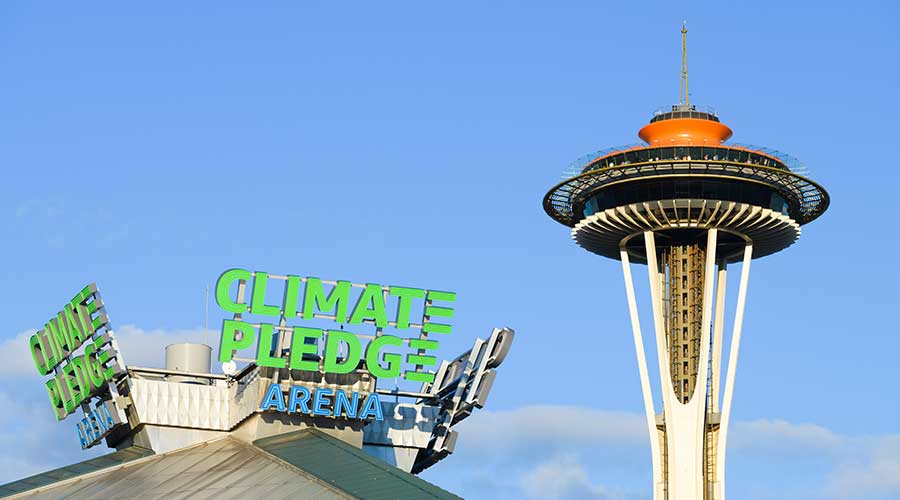Traditional Issues, New Approaches
Maintenance managers understand all too well the traditional challenges of applying paints and coatings in institutional and commercial facilities, from selecting paints and equipment to planning and preparing to ensure successful projects.
But while these ongoing challenges appear similar to those throughout the years, managers also are seeing changes in some key areas that affect all aspects of paint and coating application. Only by staying abreast of such changes can managers ensure their departments can carry out projects that meet organizations’ expectations.
Specification Decisions
Selecting paints, coatings and equipment is no longer limited to simply comparing costs for oil- or water-based paints, brushes, rollers, and materials. Technologies developed in recent years have created many more choices, as well as excellent customization opportunities that didn’t exist before.
Now, paints and coatings are meeting the rising expectations for indoor air quality, color choices, coverage, durability, life-cycle cost, and low emissions of volatile organic chemicals, to name only a few options.
In many facilities, the stakes for such decisions are high. One West Coast museum faces a unique situation in that priceless art cannot be subjected to off-gassing that might occur with certain paints. Managers’ selections must conform to standards of compatibility with materials used in precious original paintings.
Equipment choices still include brushes, rollers and spray options. But they also must take into account many iterations of these products, including auto-feed systems for rollers that eliminate time-consuming tray and roller refilling. They also can deliver major time and energy savings. These enhancements create inestimable value in situations where managers have no large time windows into which they can fit painting projects.
Paint-job quality and durability depends heavily on good surface preparation, and this requirement is especially true for floor coatings, which receive a great deal of physical abuse from traffic, in addition to normal aging. Shot blasting is the recommended surface preparation method for tough paint jobs, such as floors and much of the mechanical equipment employed in facility HVAC systems and boiler rooms.
Floor shot-blasting equipment comes in walk-behind and riding models. It throws a metal abrasive at high velocity at the surface being prepared. The shot rebounds along with loosened floor material.
Adjustments to shot-blast equipment can alter penetration, as well as coverage. The operator compares surface preparation standard photographs with the actual surface to determine when the surface is properly prepared to provide a uniform, durable and long-lasting paint job.
For removing old tile embedded in adhesive, managers can specify long-handled manual scrapers, as well as walk-behind or riding powered scrapers that remove tile, grout, rubber, epoxy, elastomer, and thin-set mortar using razor-sharp blades, which lift up and remove the old coverings and coatings.
For uneven or weather-damaged ramps, walkways and docks, powered scarifiers use steel- or carbide-tipped cutters arranged around a cylindrical drum for dustless removal of coatings and smoothing uneven surfaces. Other surface-preparation tools — crack-chasing saws, pneumatic saws for depths of 8 inches, and tile grout and tuckpointing saws — can eliminate much of the labor and time from tough cleanout jobs so the repaired surface is available for use as quickly as possible.
Finally, a range of effective dust collectors can minimize discomfort to maintenance technicians or occupants working nearby, and they reduce wear and tear on equipment motors.
Staffing Strategies
Regular maintenance repainting often occurs on a multi-year cycle. Adding extra work during major renovations or expansions can tax the regular staff severely.
The options for ensuring a smooth process include equipment upgrades to get more done with the same staff, employee overtime, and outsourcing. All of these options cost more money, so before exercising any of them, managers need to ensure that the current planning and scheduling method generates the desired degree of performance.
The most reliable way to achieve this is to require planners to schedule enough work daily to fully use the painters. Also, supervisors must schedule the work and be in the field the majority of time working the plan. By being in the field, supervisors can anticipate the needs of the painters and keep the work flowing smoothly.
If problems surface, supervisors in the field can see them as soon as they occur and prevent or limit the delays that would result. They also can more easily coordinate the work and prevent work stoppages.
A large Midwestern medical center handles workload swings by supplementing painting crews with contractors. During major expansions, contractors work in a separate area doing the painting and coatings in the new addition while the in-house staff maintains existing spaces.
Contractors can adjust their workforce daily. They also have properly powered equipment for every phase, from surface preparation to finish coat. While productive, this equipment might not be economically feasible for in-house painters to buy because the ongoing use might not warrant the cost.
Other advantages are that paint contractors know many special equipment suppliers and contractors who provide other skills to the job. The paint contractor acts as a general contractor to, for example, mechanical and electrical subcontractors. This strategy minimizes supervisory time required for busy in-house managers overseeing the construction.
Scheduling for Success
Misunderstandings often arise between painters and supervisors over expectations and performance. Daily scheduling requires more than simply assigning work. It requires supervisors to lay out their expectations.
It also means following up to see what was completed versus what was scheduled. If managers use painters efficiently, and if painters perform well against a realistic schedule, managers have a case when asking management to fund better equipment or overtime or to outsource work.
Another type of misunderstanding centers on the level of maintenance. With a written policy and accurate standard times for planning and scheduling quality work, all parties involved in painting projects will understand management expectations.
Setting standard methods and times also is an excellent way to ensure uniform quality and high performance. Everyone understands management’s requirements, and painters develop habits that ensure they will perform the same quality of work every time. Standards also ensure that the work is done in the optimum time so occupants can use the facility as much as needed.
If policies are unclear, managers and occupants might develop different viewpoints about the level of paint maintenance. Compared to equipment spaces, public areas might appear clean and orderly. But occupants might think otherwise if there are scuffmarks on the floors and walls, yellowed, chipped paint, and ceilings that look gray instead of white.
To avoid such misunderstandings, many facilities conduct regular user surveys to evaluate facility conditions. In doing so regularly, managers can get a much better idea of how the facility stacks up in the eyes of the occupants. Survey results informed one department at a major university that it had a bad image related to painting projects. As the department responded and improved its performance, survey results steadily improved.
Finally, managers should be aware that misunderstandings can arise between the operations and maintenance areas. All facilities, whether in health care, educational, commercial organizations, need time to refurbish their physical plants. Obviously, operations management would prefer not to have any interruptions.
Often, this need for full-time facility availability works against a maintenance staff that is trying to find opportunities to get painting projects done efficiently and on time. To prevent such problems, managers for both areas must communicate about the amount of time it will take to complete painting projects.
Product Focus: Paints & Coatings
|
 Benjamin Moore & Co. Benjamin Moore & Co.
Sealer
The 066 masonry sealer is a 100-percent acrylic, high-build sealer for new and previously painted masonry surfaces. Users should apply the sealer before applying a finish coat. It reduces the porosity of masonry surfaces, providing adhesion and bonds and seals to form a sound undercoat.
|
Rust-Oleum Corp.
Floor paint
AS5400 is an anti-slip single component epoxy. It features a ridged profile to handle heavy foot traffic and light vehicle traffic. It withstands intermittent spills of mild chemicals and occasional steam and chemical cleaning.
|
 Zinsser Co. Inc. Zinsser Co. Inc.
Masonry paint
WaterTite™-LV waterproofing/concrete masonry paint is for interior and exterior concrete blocks, cast concretes, stucco and other masonry. The low-VOC paint combines a waterproofing resin with micro-spheres to form a barrier that stops 12 pounds of hydrostatic pressure. It has a textured white finish that fills the micro-cracks and voids common to stucco, cast-concrete and concrete block. It can be used as a one-coat primer or paint or as a waterproofer or weather-proofer when applied in two coats.
|
 PPG Industries PPG Industries
Interior paint
WallHide paints feature a low-spatter formula that makes application and clean up easy. They are available in four different sheens including flat, matte ceramic, eggshell and semi-gloss finishes. The proprietary formula of WallHide matte ceramic contains ceramic microspheres that help create a smooth and durable stain-resistant finish that holds stains on the surface for easy removal.
|
 Convenience Products Convenience Products
Floor coating
A one-part epoxy paint, Seal-Krete Epoxy seal requires no mixing. Available in three pre-mixed colors — armor gray, slate gray and sand — it resists damage from ultraviolet light and protects against oil stains, chemical spills, and hot-tire marks.
|
 Dur-A-Flex Inc. Dur-A-Flex Inc.
Floor coating
Dur-A-Chip™ is a decorative, pour-in-place epoxy flooring system that provides a terrazzo-like appearance with the benefits of a seamless floor. It cures and hardens quickly to reduce down time, and its sanitary surfaces won’t harbor dirt, dust, or germs. The coating is chemical and stain resistant with antimicrobial capabilities and requires no waxing. The surface finish can be smooth or slip resistant, and it is low-odor.
|
ITW Devcon Futura
Protective coating
Aqualine 300 is a two-component, ambient temperature cure polyurea that forms a flexible membrane over concrete and steel substrates. It resists corrosion and damage from chemicals and thermal shock. For flooring applications, users should pour the mixed materials onto the primed surface and spread out evenly with a notched trowel or squeegee. For vertical or overhead surfaces, users should apply the coating in multiple coats using a brush or roller. |
|
Related Topics:
















